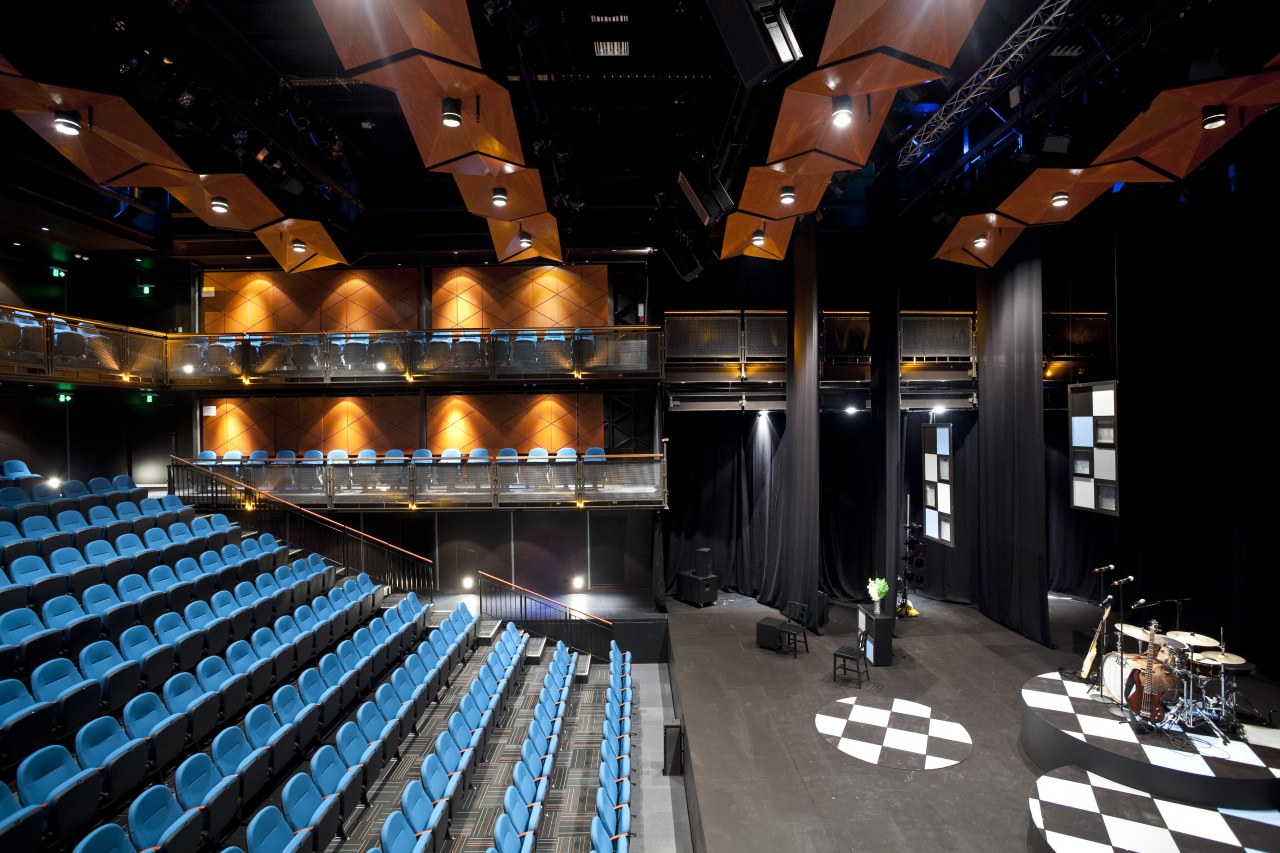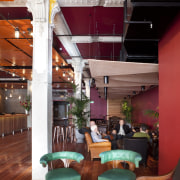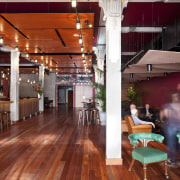Long-awaited revival - Q theatre marks return of medium-sized venue in city
Q theatre marks return of medium-sized venue in city

An American historian once said, "The arts are an even better barometer of what is happening in our world than the stock market or the debates in congress." With the opening of the Q theatre in Auckland in recent months, indications are that our society is trending towards fair to extend the barometric analogy.
Following the closure of the Watershed Theatre in the mid-'90s, architect Pip Cheshire was tasked with identifying a replacement site, and eventually a site adjacent to the town hall was selected.
"Originally part of a small strip of shops fronting Queen Street, the site carries a heritage listing, which actually worked in our favour, as the design ultimately had a minimal impact on the original structure," says Cheshire.
"Another benefit of the existing site is that it lends the theatre a sense of history; there is a feeling that the theatre has grown with the city, an important distinction given its location in the heart of the arts district."
The original building, comprising two storeys at street level and two below, now houses the front-of-house facilities, as well as two performance and rehearsal spaces, bathrooms and dressing rooms.

The new-build portion of the project, that which fronts Greys Avenue, was an altogether different proposition. Designed to house the main 340-plus seat theatre, it was driven by its own distinct aesthetic requirements, says project architect Simon McLean.
"This really is a project of two halves the heritage, character-driven portion and the modern, more utilitarian structure. The challenge was to take this complex assemblage of spaces and make something coherent of them, and something that would work on a number of different levels."
"We were conscious of the inherent verticality in the existing building," says Cheshire. "Along with the unusually shaped site, this led to a clear demarcation of the spaces on the exterior, at least."
Acoustically, the main theatre needed to be isolated from the remaining areas, making concrete the construction material of choice. Externally, the precast panels were given a moulded surface and distinctive colour to fit into the context of the adjacent buildings."
"We were aware that the facade had to be responsive to and respectful of its neighbour, the Auckland Town Hall," says McLean. "With this in mind, many of our deliberations still revolved around the fact this was a civic building in its own right, therefore it had to make a statement.

"While it doesn't make the same statement as the town hall, Q did need to make an emotional impact. Just as the name is open to interpretation, people will bring their own experience to their perception of the building itself."
Cheshire agrees. "If you make a building, or a space, totally anonymous it becomes ambiguous. As a performer or a designer you want something to rub against, something that feeds vitality. The building is the right fit for the theatre. There is just enough character to work with, but not so much it overshadows the performers or performances."
"What is important here is the ever-changing machinery of theatre. Its true quality is not based on the finesse of the finishes, but on what can be achieved within. With Q, any part of the building can be a performance space, and that is due in part to its unrefined, blank canvas feel. Even with twice the budget, the inherent character of the building would have won through. Besides, it is in the nature of theatre to do things on the smell of an oily rag."
Credit list
Architect
Facade design
Drapes
Lighting
Culinary and dining
Signage
Story by: Justin Foote
Home kitchen bathroom commercial design
9 tile shapes and finishes that think outside the square
Reflection and repose
White cloud, blue sky













